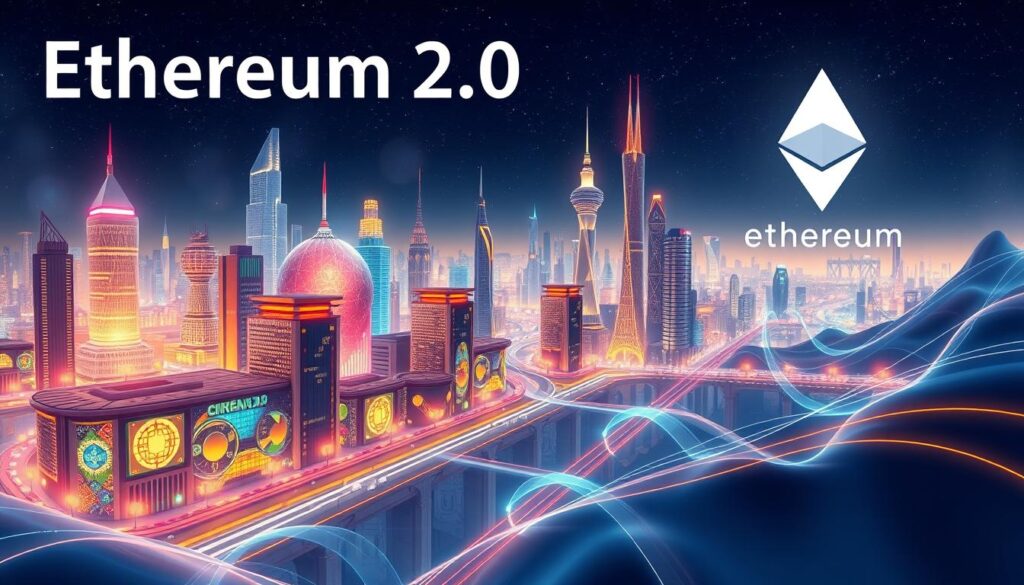Ethereum gas fees are a crucial component of the Ethereum blockchain platform, playing a vital role in facilitating blockchain transactions. Gas fees are priced in tiny fractions of the cryptocurrency ether, known as gwei (10-9 ETH), and are essential for conducting transactions or executing contracts on the Ethereum network. Understanding Ethereum gas fees is key to navigating the Ethereum ecosystem, and this article will delve into the intricacies of gas fees, including their importance in facilitating transactions and their impact on the Ethereum network.
Ethereum gas fees are a fundamental aspect of the Ethereum blockchain, and their importance cannot be overstated. As the Ethereum network continues to evolve, it’s essential to stay informed about gas fees and their role in shaping the Ethereum ecosystem. Whether you’re a seasoned user or just starting to explore the world of Ethereum, understanding gas fees is crucial for making informed decisions about your blockchain transactions.
Table of Contents
Key Takeaways
- Ethereum gas fees are denoted in tiny fractions of the cryptocurrency ether, known as gwei (10-9 ETH).
- Gas fees are essential for conducting transactions or executing contracts on the Ethereum network.
- Understanding Ethereum gas fees is crucial for navigating the Ethereum ecosystem.
- Ethereum gas fees fluctuate based on network traffic and validator availability.
- Avoiding high gas fees is possible by choosing less busy network times, using gas trackers, and utilizing Layer 2 solutions or dApps.
- Ethereum gas fees are calculated based on the formula: Units of Gas Used * (Base Fee + Priority Fee).
Understanding Ethereum Gas Fees
Ethereum gas fees are a crucial aspect of the Ethereum network, as they compensate network validators for the computational resources required to process and validate transactions. The gas price is determined by supply, demand, and network capacity at the time of the transaction, which in turn affects the overall transaction costs.
The concept of gas fees can be compared to tolls on a highway, where the toll amount depends on the traffic and road conditions. Similarly, Ethereum gas fees adjust according to the network’s demand and capacity. This mechanism ensures that network validators are incentivized to participate in maintaining the network, thereby securing the Ethereum ecosystem.
To better understand the role of gas fees, it’s essential to consider the factors that influence gas prices and transaction costs. These factors include network demand, transaction complexity, and recent upgrades like EIP-1559 and Ethereum 2.0. By grasping these concepts, users can optimize their transactions, reduce costs, and navigate the Ethereum network with confidence.
| Factor | Influence on Gas Fees |
|---|---|
| Network Demand | Higher demand leads to higher gas fees |
| Transaction Complexity | More complex transactions require higher gas fees |
| Recent Upgrades | EIP-1559 and Ethereum 2.0 aim to stabilize and decrease gas fees |
The Anatomy of Gas Costs
The Ethereum network operates on a system of gas units, which measure the computational power required to conduct a transaction. This system is similar to a car needing gasoline to run, where the gas units are the fuel that powers the network. The cost of gas is paid in Ethereum’s native currency, Ether (ETH), and is usually quoted in gwei.
The gas units required for a transaction vary depending on the complexity of the transaction. For example, a standard ETH transfer requires 21,000 units of gas, while more complex transactions, such as those involving smart contracts, require more gas units. The cost of gas is calculated based on the gas used for an operation multiplied by the cost per unit gas.
Here are some key factors that affect gas costs:
- Gas limit: The maximum computational effort allowed for a transaction
- Base fee: The minimum fee required for a transaction to be considered valid
- Priority fee: The tip paid to miners for prioritizing a transaction
Understanding how gas costs work is essential for navigating the Ethereum network and minimizing transaction fees. By knowing the factors that affect gas costs, users can make informed decisions about when to transact and how to optimize their transactions.
| Transaction Type | Gas Units Required |
|---|---|
| Standard ETH transfer | 21,000 |
| Smart contract interaction | varies |
How Gas Fees Are Calculated
The Ethereum network’s gas fee calculation has undergone significant changes with the introduction of EIP-1559. This update has altered the way transaction priority is determined, allowing for a more efficient and transparent fee calculation process. The new formula, Gas fee = Gas units (limit) * (base fee + priority fee), has simplified the calculation, making it easier for users to understand and predict their transaction costs.
A key component of the gas fee calculation is the base fee, which is set by the network based on demand. This ensures that the network remains secure and that transactions are processed in a timely manner. Users can also add a priority fee to their transactions, which helps to speed up the processing time. This fee is optional, but it can be beneficial for time-sensitive transactions.
Understanding Gas Limits and Priority Fees
Gas limits play a crucial role in preventing runaway computations and ensuring that transactions are processed efficiently. The gas limit is the maximum amount of gas that a transaction can consume, and it is typically set by the user. A standard transaction on the Ethereum network usually requires a gas limit of 21,000 gwei. The priority fee, on the other hand, is a tip that users can add to their transactions to incentivize miners to process their transactions more quickly.
Here is a breakdown of the gas fee calculation:
- Base fee: set by the network based on demand
- Priority fee: optional fee added by the user to speed up transaction processing
- Gas limit: maximum amount of gas that a transaction can consume
By understanding how gas fees are calculated, users can better navigate the Ethereum network and make more informed decisions about their transactions. The introduction of EIP-1559 has brought significant improvements to the network, including a more efficient fee calculation process and improved transaction priority. As the network continues to evolve, it is likely that we will see further improvements to the gas fee calculation process, making it even more efficient and user-friendly.
| Transaction Type | Gas Limit | Gas Price |
|---|---|---|
| Standard Transaction | 21,000 gwei | 20 gwei |
| Smart Contract Interaction | 100,000 gwei | 50 gwei |
Factors Affecting Gas Prices
Gas prices on the Ethereum network are influenced by various factors, including network congestion, demand fluctuations, and market dynamics. When the network is congested, gas prices tend to rise, while periods of low activity result in lower fees. The impact of major events in the crypto world, such as popular NFT launches or DeFi trends, can also drive up gas prices.
Some key factors that affect gas prices include:
- Network demand: High demand for transactions leads to increased gas prices.
- Transaction complexity: More complex operations result in higher gas fees.
- Gas limit: The maximum amount of gas users are willing to spend on a transaction.
Understanding these factors can help users optimize their transactions and reduce gas fees. By monitoring gas prices and transacting during off-peak hours, users can save on fees. Additionally, strategies like bundling transactions and setting competitive gas prices can also lower costs.
It’s essential to stay informed about market dynamics and demand fluctuations to make the most of Ethereum’s capabilities while minimizing costs. By being aware of these factors, users can navigate the Ethereum network more efficiently and make the most of their transactions.
Peak vs. Off-Peak Transaction Times
Understanding gas price trends is crucial for cost optimization. Ethereum gas fees can fluctuate significantly depending on network congestion. To minimize costs, it’s essential to consider transaction timing. Off-peak hours, such as late nights and weekends (UTC time), often offer lower Ethereum gas fees due to decreased network congestion.
By analyzing gas price trends, users can identify the best times to transact. For instance, gas fees can be around 30-40 Gwei on weekends compared to the usual 60-80 Gwei. Additionally, gas fees can decrease by 20-30% during off-peak hours, such as early mornings in the U.S. (around 4-6 AM EST) or late at night (from 11 PM to 1 AM EST). This information can help users plan their transactions strategically, reducing overall costs.
Best Times to Transact
To optimize transaction timing, consider the following:
- Weekends: Generally, gas fees are lower on weekends due to reduced network activity.
- Off-peak hours: Early mornings and late nights often experience lower gas fees.
- Layer 2 solutions: Utilizing layer 2 solutions like Optimism or Arbitrum can provide lower gas fees compared to directly transacting on the Ethereum blockchain.
Avoiding High Fee Periods
Being aware of high-fee periods can help users avoid excessive costs. Gas fees can be significantly higher during periods of high network congestion, such as during ICOs or NFT drops. By planning transactions around these events, users can minimize their gas costs and optimize their transaction timing for better cost optimization.
Gas Fee Optimization Strategies
Optimizing gas fees is crucial for transaction efficiency and fee reduction. One effective way to achieve this is by using gas saving tips such as timing transactions strategically during off-peak hours. This can result in significant cost savings, as gas fees are lower during these times.
Another approach is to utilize Layer-2 solutions, which can provide faster transaction times and lower fees. Some popular options include Polygon, Arbitrum, and Optimism. Additionally, techniques like transaction aggregation and optimizing gas parameters can help users reduce costs and execute transactions more efficiently.
Here are some benefits of using these strategies:
* Reduced gas fees
* Faster transaction times
* Improved transaction efficiency
* Increased cost savings
By implementing these gas saving tips and utilizing the right tools and technologies, users can achieve significant fee reduction and improve their overall experience on the Ethereum network.
| Strategy | Benefits |
|---|---|
| Timing transactions strategically | Lower gas fees, cost savings |
| Using Layer-2 solutions | Faster transaction times, lower fees |
| Transaction aggregation and optimizing gas parameters | Reduced costs, improved transaction efficiency |
Common Gas Fee Mistakes to Avoid
When dealing with Ethereum gas fees, it’s essential to be aware of common pitfalls that can lead to failed transactions and wasted fees. One of the primary mistakes users make is setting the gas limit or gas price too low, resulting in gas limit errors. This can cause transactions to fail, and the specified amount of gas fee will still be deducted from the user’s wallet.
Another critical aspect to consider is network awareness. Ignoring current network conditions can lead to overpaying for transactions or experiencing significant delays. It’s crucial to stay informed about network congestion, gas price volatility, and other factors that can impact transaction costs.
- Set conservative gas limit caps to prevent failed transactions
- Estimate gas requirements with a margin of error to account for network awareness
- Track historical gas costs for common transaction types to make informed decisions
By being mindful of these potential pitfalls and taking steps to avoid them, users can minimize the risk of failed transactions and optimize their gas fee strategy. This, in turn, can help reduce the overall cost of transactions on the Ethereum network and improve the user experience.
Tools for Monitoring Gas Fees
Monitoring gas fees is crucial for a smooth Ethereum transaction experience. Several tools are available to help users track and estimate gas fees, including gas trackers, fee estimators, and blockchain explorers. These tools provide real-time data on gas prices, allowing users to plan their transactions accordingly.
Some popular tools for monitoring gas fees include Etherscan Transaction gas price estimator, ETH Gas Station, and Blocknative ETH Gas Estimator. These tools offer features like customizable alerts, historical fee data, and real-time gas price updates. By using these tools, users can make informed decisions about when to transact and how much gas to allocate.
For example, gas trackers can help users identify the best times to transact, while fee estimators can provide accurate estimates of gas costs. Blockchain explorers can also be used to track gas prices and transaction fees. By leveraging these tools, users can optimize their transaction experience and minimize costs.
Additionally, some tools offer features like WatchOS support, Lock Screen Widgets, and Home Screen Widgets for user convenience. These tools can be beneficial for various users, including Ethereum developers, NFT traders, DeFi investors, and cryptocurrency day traders.
| Tool | Features | Benefits |
|---|---|---|
| Etherscan Transaction gas price estimator | Real-time gas price updates, customizable alerts | Helps users plan transactions and minimize costs |
| ETH Gas Station | Historical fee data, gas price tracking | Provides users with accurate estimates of gas costs |
| Blocknative ETH Gas Estimator | Real-time gas price updates, customizable alerts | Helps users optimize their transaction experience |
Impact of Network Upgrades on Fees
The Ethereum network has undergone significant upgrades to improve its scalability and reduce gas fees. One notable upgrade is the London upgrade, which introduced EIP-1559 and changed the way gas fees are calculated. This upgrade has made gas fees more predictable, allowing users to better plan their transactions. The London upgrade is a crucial step towards Ethereum 2.0, which aims to achieve scalability improvements through a proof-of-stake consensus mechanism.
Some key benefits of the London upgrade include:
- More predictable gas fees
- Improved scalability
- Increased security
Future upgrades, such as sharding, will further enhance the network’s scalability improvements, potentially reducing gas fees. The Ethereum 2.0 upgrade will also introduce a new consensus mechanism, which will reduce the network’s energy consumption and increase its overall efficiency. As the network continues to evolve, we can expect to see significant improvements in scalability and gas fees.
The impact of these upgrades on gas fees will be significant, with potential reductions in fees and improved transaction times. As the network continues to grow and develop, it’s essential to stay up-to-date with the latest upgrades and improvements. With the London upgrade and future upgrades like Ethereum 2.0, the Ethereum network is poised to become more efficient, scalable, and user-friendly.
| Upgrade | Benefits |
|---|---|
| London upgrade | More predictable gas fees, improved scalability |
| Ethereum 2.0 | Scalability improvements, reduced gas fees, increased security |
| Sharding | Further scalability improvements, reduced gas fees |
Gas Fees Across Different Platforms
When considering blockchain comparison, it’s essential to look at the gas fees associated with different platforms. Ethereum, while being a prominent player, often has high gas fees, especially during peak transaction times. However, alternative networks like Binance Smart Chain, Solana, and Layer 2 solutions offer lower transaction costs, making them attractive options for users.
A key aspect to consider in this blockchain comparison is the trade-off between cost, security, and decentralization. For instance, Solana offers negligible transaction fees, often below a single cent, and confirmation times of around 400ms, making it an excellent choice for users prioritizing speed and low costs. On the other hand, Ethereum’s gas fees can range from $50 to $150 during low-traffic periods but can surge to hundreds of dollars per transaction during high-traffic times.
In the context of cross-chain solutions, platforms like Polygon (formerly Matic Network) are gaining traction due to their ability to provide faster and cheaper transactions. For example, minting Reddit’s Collectible Avatar NFTs on Polygon starts at 0.18 MATIC ($0.23) on OpenSea, significantly lower than what one might expect on Ethereum. This highlights the importance of exploring alternative networks and cross-chain solutions to mitigate high gas fees.
Ultimately, the choice of platform depends on the user’s priorities, whether it’s security, decentralization, or cost. By understanding the blockchain comparison and the nuances of each platform, users can make informed decisions that best suit their needs, leveraging the benefits of alternative networks and cross-chain solutions to navigate the complex landscape of gas fees.
Smart Contract Interactions and Gas Costs
Interacting with smart contracts on the Ethereum blockchain can be a complex process, especially when it comes to decentralized finance (DeFi) applications and non-fungible tokens (NFTs). These interactions often require more computational power, resulting in higher gas fees compared to simple token transfers.
The process of minting NFTs, for example, can be a costly endeavor due to the complex transactions involved. Decentralized finance protocols, such as lending and borrowing platforms, also require significant computational power to execute smart contracts, leading to higher gas fees. Additionally, complex transactions such as those involved in DeFi applications can result in increased gas costs.
To minimize gas costs, it’s essential to understand the factors that affect them. Here are some key considerations:
- Gas price: Setting a higher gas price can increase the likelihood of transaction confirmation, but it also results in more Ether being spent.
- Gas limit: The maximum amount of gas that can be spent on a transaction determines the maximum amount of Ether allowed to be spent on gas fees.
- Network congestion: Higher gas fees can be caused by a high number of transactions on the network, making it essential to plan transactions strategically.
By understanding the factors that affect gas costs and planning transactions strategically, users can navigate the complex world of smart contract interactions and minimize their gas fees. Whether it’s interacting with DeFi protocols or minting NFTs, being aware of the gas costs involved can help users make informed decisions and optimize their transactions.
Alternative Solutions for High Fees
High Ethereum gas fees can be a significant barrier to using the network. However, there are alternative solutions that can help reduce costs. Layer 2 solutions have gained popularity as a way to process transactions off the main Ethereum chain, while still benefiting from its security. These solutions can significantly reduce transaction costs, making them an attractive option for users.
Another option is to use sidechains, which allow for the transfer of assets between different blockchain networks. This can help reduce the load on the Ethereum network, resulting in lower gas fees. State channels are also being explored as a way to reduce costs, by allowing multiple transactions to be processed in a single batch.
Some popular platforms are already implementing these solutions, offering users a more cost-effective way to transact on the Ethereum network. For example, certain platforms can refund up to 90% of Ethereum gas fees in their native tokens. Additionally, users can batch transactions to optimize gas usage, reducing gas costs by processing multiple transactions within a single operation.
| Platform | Gas Fee Reduction |
|---|---|
| Polygon | Over 90% |
| Arbitrum | Over 90% |
| Optimism | Over 90% |
By exploring these alternative solutions, users can reduce their transaction costs and make the most of the Ethereum network. Whether it’s through Layer 2 solutions, sidechains, or state channels, there are options available to help mitigate the high gas fees associated with Ethereum transactions.
The Future of Ethereum Gas Fees
As the Ethereum ecosystem continues to evolve, the Ethereum roadmap is paving the way for significant technological advancements that will impact fee projections. With the switch to proof-of-stake (PoS) and the implementation of sharding, Ethereum is expected to process 100,000 transactions per second in the future, according to Vitalik Buterin.
The full implementation of sharding will offload transactions from the mainnet, reducing congestion and potentially lowering fee projections. Additionally, the broader adoption of Layer 2 solutions will shape the fee landscape, making it more efficient and cost-effective for users.
Some of the key developments that will influence the future of Ethereum gas fees include:
- Increased scalability and transaction capacity
- Improved fee mechanisms and algorithms
- Enhanced user experience through sponsored transactions and gasless protocols
As the Ethereum ecosystem continues to grow and mature, it’s essential to stay informed about the latest developments and how they may impact fee projections. By understanding the Ethereum roadmap and the technological advancements on the horizon, users can better navigate the evolving landscape of Ethereum gas fees.
Conclusion
As we conclude our exploration of Ethereum gas fees, it’s clear that understanding this crucial aspect of the Ethereum ecosystem is essential for anyone seeking to participate effectively in the world of blockchain technology. By familiarizing ourselves with the factors that influence gas prices, the strategies for optimization, and the ongoing developments within the network, we empower ourselves as blockchain users to navigate the Ethereum landscape with confidence.
The adoption of Ethereum and decentralized applications (dApps) continues to grow, and with it, the importance of staying informed about gas fees. By leveraging the insights and tools discussed throughout this article, we can make informed decisions, optimize our transactions, and actively contribute to the evolution of the Ethereum ecosystem. As the network undergoes upgrades and scaling solutions emerge, it’s crucial to remain vigilant and adapt our gas fee management strategies accordingly.
Ultimately, the knowledge gained about Ethereum gas fees equips us to become more engaged and empowered users, capable of navigating the blockchain space with greater efficiency and cost-effectiveness. By staying informed and proactively managing our gas fees, we can fully embrace the transformative potential of Ethereum and the broader blockchain industry.
FAQ
What are Ethereum gas fees?
Ethereum gas fees are the small fees paid by users to execute transactions or interact with smart contracts on the Ethereum blockchain. These fees are essential for facilitating transactions and incentivizing validators (formerly miners) to maintain the network.
Why are gas fees necessary for the Ethereum network?
Gas fees are necessary to prevent spam and abuse on the Ethereum network. They ensure that users pay a small amount to execute computations, preventing the network from being overwhelmed with trivial or malicious transactions.
How do gas fees contribute to the functioning of the Ethereum blockchain?
Gas fees incentivize validators (formerly miners) to participate in maintaining the Ethereum network by providing a reward for processing transactions and executing smart contracts. This helps to keep the network secure and decentralized.
What are gas units and how do they relate to computational power?
Gas units represent the amount of computational power required to execute a transaction or smart contract on the Ethereum network. The more complex the operation, the more gas units it will require, which in turn affects the overall gas cost.
How are gas fees calculated on the Ethereum network?
Gas fees are calculated based on a combination of the base fee, which fluctuates based on network demand, and the priority fee (tip), which users can adjust to influence transaction speed. The gas limit also plays a key role in preventing runaway computations.
What factors can influence Ethereum gas prices?
Gas prices on Ethereum can be affected by factors such as network congestion during peak usage times, broader market sentiment and ETH price fluctuations, and major events in the crypto world (e.g., popular NFT launches or DeFi trends).
When is the best time to transact on Ethereum to minimize gas fees?
Typically, gas prices tend to be lower during off-peak periods, such as late at night or on weekends, when network activity is lower. Users can monitor real-time gas price data to plan their transactions accordingly.
What strategies can be used to optimize Ethereum gas fees?
Strategies for optimizing gas fees include using Layer 2 solutions, batching multiple transactions, and carefully setting gas limits to avoid overpaying. Leveraging gas tracking tools can also help users make informed decisions about when and how to execute their transactions.
What are some common mistakes to avoid when dealing with Ethereum gas fees?
Common mistakes include setting gas limits too low, leading to failed transactions, and blindly using default gas settings without considering current network conditions. It’s important to stay aware of network activity and plan transactions accordingly to avoid unnecessary costs.
What tools are available for monitoring and estimating Ethereum gas fees?
There are various gas trackers, blockchain explorers, and wallet integration tools that users can leverage to monitor real-time gas prices, estimate transaction costs, and plan their Ethereum activities more effectively.
How have recent and upcoming Ethereum network upgrades affected or will affect gas fees?
The implementation of EIP-1559 through the London upgrade has made Ethereum gas fees more predictable, with the introduction of a base fee that is dynamically adjusted. Future scaling solutions, such as sharding, are expected to help alleviate fee pressures on the Ethereum network.
How do Ethereum gas fees compare to other blockchain platforms?
Ethereum gas fees can be higher than some alternative blockchain platforms, such as Binance Smart Chain or Solana, which often have lower transaction costs. However, these other platforms may prioritize different trade-offs, such as security or decentralization.
What are the gas costs associated with complex Ethereum operations, such as DeFi and NFTs?
Interacting with smart contracts in DeFi protocols and minting NFTs on Ethereum can often incur higher gas fees due to the increased computational requirements of these operations. Understanding these costs is crucial for users engaging in these activities.
What are the alternative solutions to high Ethereum mainnet fees?
To reduce gas costs, users can leverage Layer 2 solutions like Optimistic Rollups and ZK-Rollups, as well as explore sidechains and state channels. These alternatives aim to provide more affordable and efficient transaction processing while maintaining Ethereum’s security and decentralization.
What is the future outlook for Ethereum gas fees?
The future of Ethereum gas fees is tied to the network’s ongoing development and scaling efforts. Upcoming upgrades, such as the implementation of sharding, are expected to help improve the scalability and reduce the fee burden on the Ethereum ecosystem. However, challenges remain, and users should stay informed about the latest developments.









